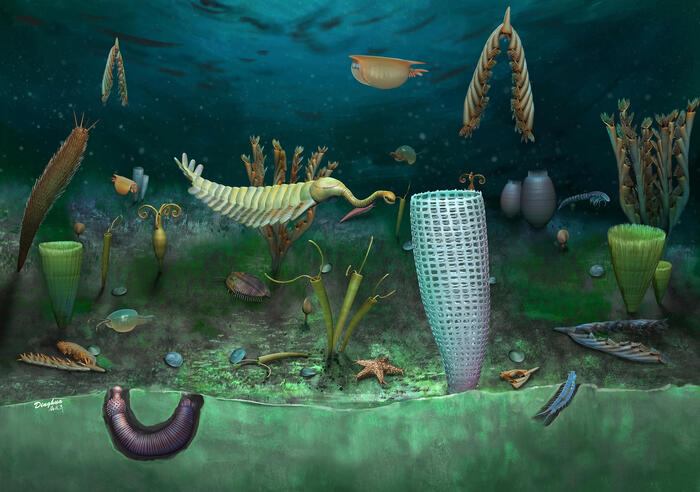Discovered the fossil remains of an entire marine ecosystem of 462 million years ago, there are at least 170 species including worms, starfish, crustaceans and arthropods so far unknown. To discover and study this great deposit of fossils that helps to shed light on the period immediately after the Cambrian, a sort of Big Bang for the life of the Earth in which there was an explosion of many new species, is the research group led by Joseph Botting, of the National Museum of Wales and the Chinese Academy of Sciences. The study is published in the journal Nature Ecology & Evolution.
The large deposit discovered in the middle of the pandemic in the current Wales has a series of characteristics for which it has been defined a deposit of type Burgess Shale, from the name of the fossil site discovered at the beginning of the '900 in Canada, dating back to the Cambrian period, in which they can also preserve in the clay most of the soft tissues of the trapped animals.
The new site, found at Castle Bank, has preserved for 462 million years a veritable marine ecosystem dating back to a little-known period, the so-called Middle Ordovician, in which many small marine organisms were found, even just 1 millimeter in size. The discovery allows us to take an unprecedented look at the fauna that populated the seas before the great mass extinction that occurred shortly after, probably due to a rapid cooling of the world climate or to the violent bombardment of gamma rays due to a nearby supernova.
The newly discovered fauna consists of at least 170 species, in particular worms, starfish, crustaceans and arthropods of which also some of the enigmatic creatures already present in the Cambrian period, such as the Opabinia with 5 eyes and some megacheiri, survived in the Ordovician and then extinct

